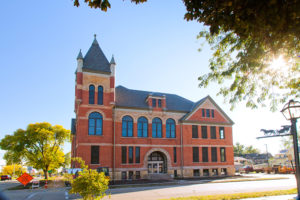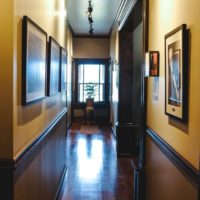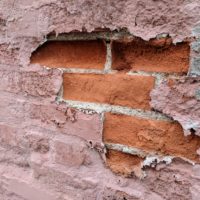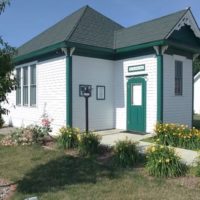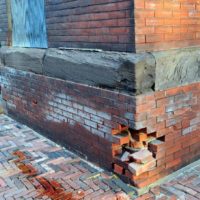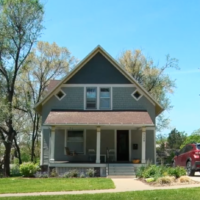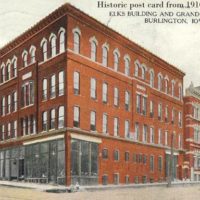2017 Preservation at its Best, Adaptive Reuse: Roosevelt School (Clinton)
Constructed in 1888, the Clinton High School and Public Library (“Roosevelt School”) represented a landmark early investment in the burgeoning lumber center’s prosperity and commitment to education. It served the community for over a century as high school until 1922, an elementary school until 1974, and the school’s administrative headquarters until 2012, when the district moved elsewhere.
At the time the school district left, it was required to complete Iowa Department of Education-mandated upgrades to the building that would have been cost prohibitive with a $4-5 million price tag. However, the building was well positioned for re-use with the right funding source: Original hardwood floors were under carpet, the high wooden ceilings and transom windows remained above a drop ceiling, aluminum windows had replaced the original wooden windows, but no major exterior alterations were made.
An example of the Victorian Romanesque style, the 90-foot tower in the northeast corner of the building and its distinct arched entries make a strong impression along South 4th Street.
The availability of $3 million in federal Community Development Block Grant funds after the floods of 2008 presented an opportunity for Community Housing Initiatives to partner to restore the building as 16 mixed income buildings, our fourth restoration of a downtown Clinton historic building.
in January 2015. ASK Studio of Des Moines was the architect; Ringland-Johnson Construction of Cherry Valley, Illinois, was the general contractor. The City of Clinton and Clinton Community School District, as well as the Iowa Economic Development Authority, Eastern Iowa Regional Housing Corporation, Eastern Iowa Intergovernmental Association, and Iowa State Historic Preservation Office were all key partners. Other funding sources for the project include developer equity, conventional financing, and state historic tax credits. The project total expense was $4.8 million.
Restoration-extensive repairs to the masonry and a new roof. Inside, rolling back decades of alterations quickly revealed the grand historic form of the school’s interior. Restoration of the building’s woodwork was a particularly noteworthy part of the transformation, which seems appropriate given Clinton’s history as a commercial center in lumber. Crews were able to make repairs in the building’s floors and ceilings of such quality that nearly all evidence of past alterations was swept away. The building’s extensive wainscoting and its slate chalkboards were carefully restored and remain in place throughout the structure.
Especially high ceilings on the northeast quadrant of the building’s second floor allowed CHI to offer their first loft units that take advantage of commanding views from the building’s north and east-facing arched windows. In many cases, interior walls within apartments do not reach all the way to the ceiling, preserving the sense of volume in historic classrooms.
Two particularly noteworthy apartments are in the northeast corner; on the first floor, the former superintendent’s office and its sliding pocket doors and private washroom remain in place. On the second floor and into the attic (third floor) upstairs, the team settled on a one-of-a kind loft unit with a sitting room above in the top of the building’s 90-foot masonry tower. It provides incomparable views of downtown Clinton. In the tower, Clinton High School students 100 years ago had a tradition of carving their names into the brick walls. This priceless piece of Clinton history now graces a resident’s living room.
Several hundred Clinton residents jammed the building for its October 2016 grand reopening, many of them pointing out former classrooms where they had attended elementary school or sharing other memories of this one-of-a-kind local landmark. The overwhelming community sentiment about the building has been one of appreciation that Roosevelt School could be protected as a continuing source of Clinton pride.
Preservation Iowa’s two most visible programs are Iowa’s Most Endangered and Preservation at Its Best. These two programs work well together because being listed as Most Endangered often times leads to awareness, a preservation effort, and a high-quality, award winning project.
The full list of Preservation Iowa’s 2017 Preservation at its Best award winners include:

